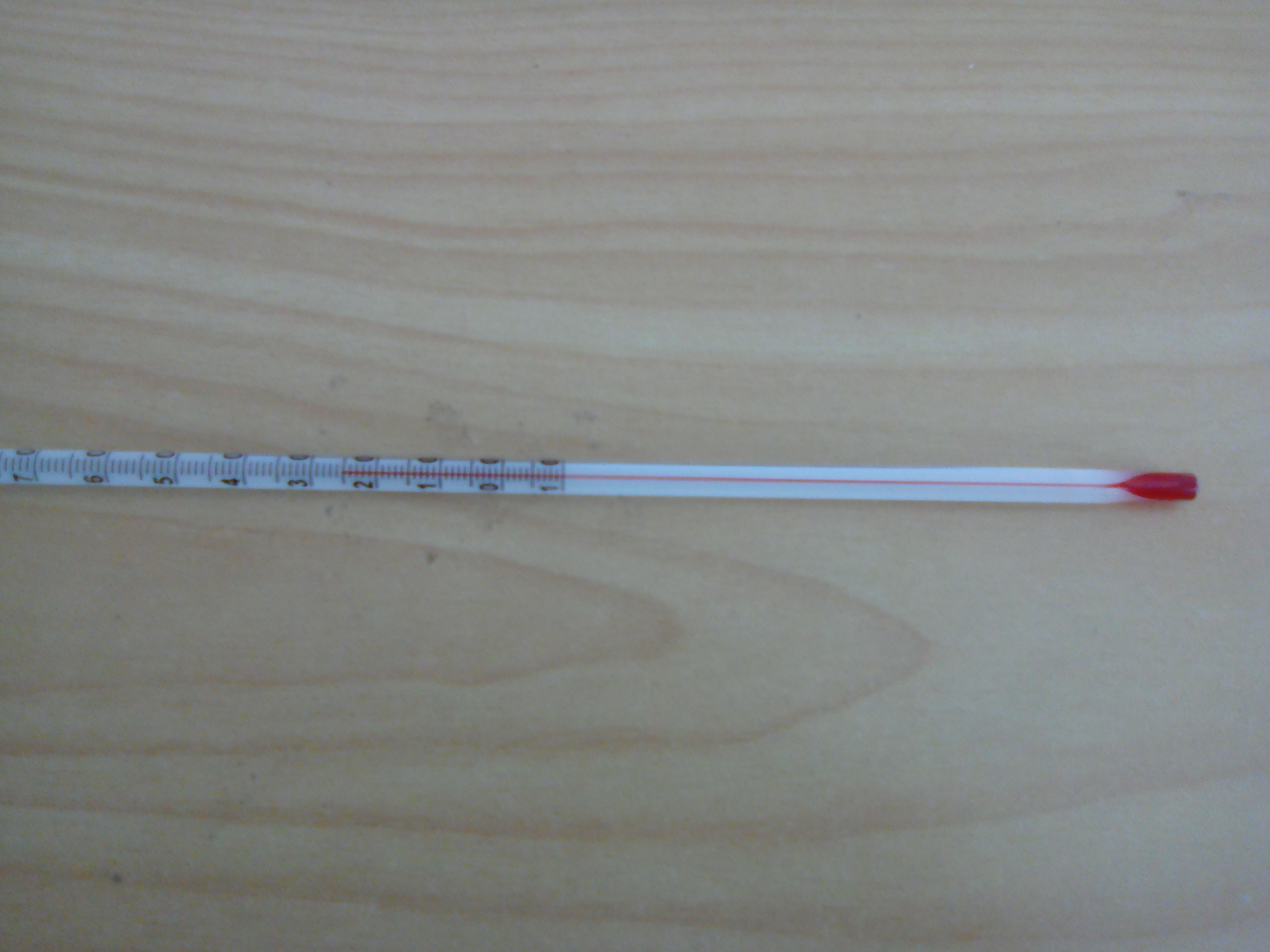I’ve just bought some thermometers, to use with a first-year physics class. A box of ten of them. Alcohol filled, which makes them a whole lot safer than the mercury ones. (If you have a mercury thermometer, my advice is never, ever break it, especially if it’s at home. I broke one at university a few years ago – at least we had the ability to clean it up properly – but most homes won’t.)
Anyway, a little test as to how good they are. What is the temperature in my office?
They are graduated in whole degrees Celsius, but I reckon I can read them to the nearest half a degree. Here are the readings (in degrees C), after they have all been sitting next to each other on my desk for a while:
24.5, 25.5, 25.0, 24.0, 24.0, 21.5(!), 24.0, 25.5, 23.0, 25.0
So, what can we make of that? Now, I said “how good they are” but really I should be more specific. What I’ve done is looked at the consistency between thermometers, for this situation only. First, we can see that they don’t agree with each other. One of them in particular, reading 21.5 C, appears to be well below the others. I’m going to put that one to one side, at least for now. (There are statistical ways that we can identify outliers, but I won’t explore that now).
What does that leave us with then?
23.0 – 1 thermometer.
23.5 – 0 thermometers
24.0 – 3 thermometers
24.5 – 1 thermometer
25.0 – 2 thermometers
25.5 – 2 thermometers
Let’s take the mean of this. Add, them up, divide by the number we have (nine) and we have the mean temperature in my office is 24.5 degrees Celsius. Or, more specifically, the mean temperature on my desk a few minutes ago as recorded by my sample of thermometers was 24.5 degrees Celsius.
Right, how sure am I about that value? Now we run into some problems. What have I actually measured? The temperature using ten (or nine), nominally identical thermometers. But what if the manufacturer has made a mistake in their manufacturing process? It’s likely that all thermometers are impacted by the same mistake. They could all be reading too high, or too low, by a systematic amount. That makes things really awkward. I have no idea, unless I now compare with some other temperature measurement.
This all makes a ‘simple’ measurement of temperature rather less simple.
Does it matter? Well, that depends. What am I going to be using the thermometers for? Actually, for the experiments that the students will do, what matters is the temperature difference between two situations. So it doesn’t really matter if a thermometer is reading too high or too low, so long as it consistently reads too high or too low. The difference between two readings (e.g. in a hot liquid and in a cold liquid) should be more reliable than just a reading of the actual temperature [And I’m about to try this… results to come…] And, in any case, for the purposes of what the students are doing (looking at heat flow), whether its a 20 C drop or a 22 C drop really doesn’t impact much on their learning at all.
However, in some situations making a “good” measurement really does matter. That’s why we need temperature standards, and have a Measurement Standards Laboratory hidden in the dark depths of Lower Hutt. Ultimately, every temperature measurement should be able to be traced back to a standard. Currently, the temperature standard we use is defined in terms of the triple point of water. That’s the point, that occurs at a very specific temperature and pressure, that water exists as solid, liquid and gas all at the same time. So we can say the ‘kelvin’ is equal to 1/273.16 of the thermodynamic temperature of the triple point of water. The ‘kelvin’ scale is related very simply to the Celsius scale – a temperature difference of 1 K is the same as the temperature difference of 1 degree Celsius. But the ‘zero’ is different. In kelvin, the lowest possible temperature, absolute zero, is 0 K. In Celsius, absolute zero takes the value -273.16 K. You can’t get colder than that.
The triple point of water is useful because it is a repeatable reference point. It is, however, less useful when we are dealing with temperatures that aren’t terribly close to room temperature – that is, very hot or very cold temperatures. So in practice, some other reference points are brought in as well.
But that is about to change. On 20 May 2019*, we will have a new definition of units, and the kelvin doesn’t escape. It will now be defined by making Boltzmann’s constant a precise value: 1.380649 times ten to the power -23 joules per kelvin. It’s not so obvious how that works, but it does, for a metrologist anyway, make a lot of sense.
* For a physicist, World Metrology Day is way more exciting than Brexit Day. Though, given the careful planning and thought behind it, it’s likely to be a whole lot less chaotic.
